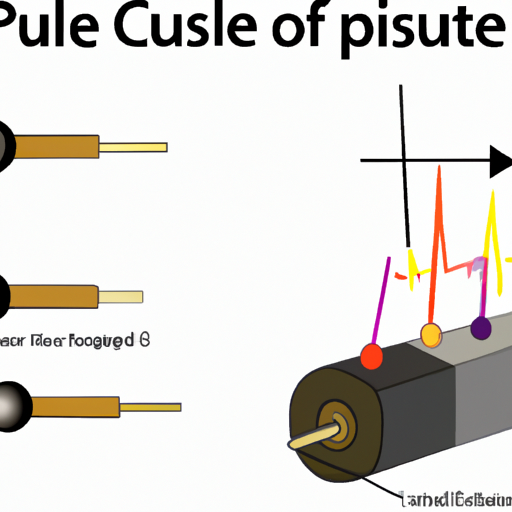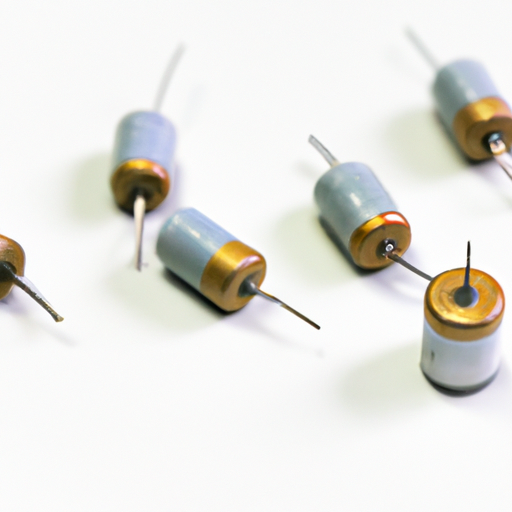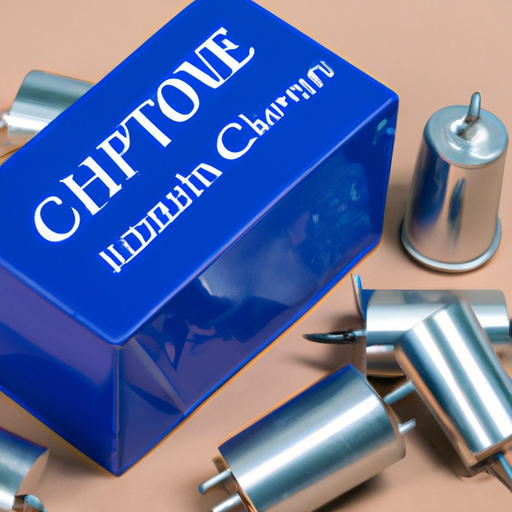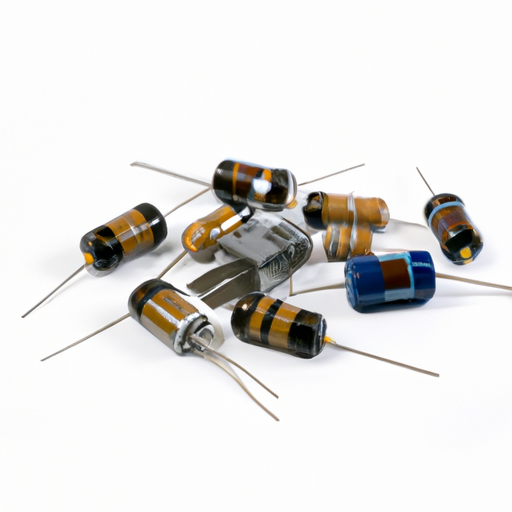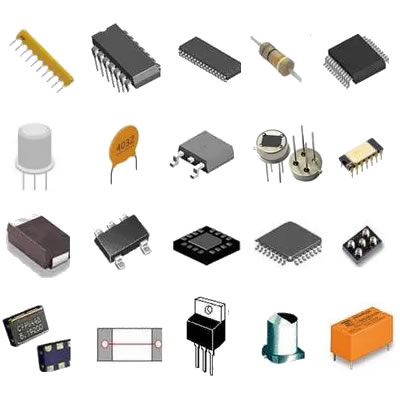How does a pulse capacitor work?
How Does a Pulse Capacitor Work?
I. Introduction
In the realm of electrical engineering, capacitors play a crucial role in energy storage and management. Among the various types of capacitors, pulse capacitors stand out due to their unique ability to handle rapid charge and discharge cycles. This blog post will delve into the workings of pulse capacitors, their applications, advantages, limitations, and future trends. Understanding how pulse capacitors function is essential for engineers and technologists who rely on them in various high-performance applications.
II. Basic Principles of Capacitors
A. Definition and Function of a Capacitor
A capacitor is an electronic component that stores electrical energy in an electric field. It consists of two conductive plates separated by an insulating material known as a dielectric. When a voltage is applied across the plates, an electric field is created, allowing the capacitor to store energy.
B. Components of a Capacitor
1. **Dielectric Material**: The dielectric is a non-conductive substance that increases the capacitor's ability to store charge. Common dielectric materials include ceramic, plastic, and electrolytic substances.
2. **Plates**: The conductive plates are typically made of metal and are responsible for holding the electric charge. The surface area and distance between the plates determine the capacitance value.
C. How Capacitors Store and Release Energy
Capacitors store energy when they are charged and release it when they are discharged. The amount of energy (E) stored in a capacitor can be calculated using the formula:
\[ E = \frac{1}{2} C V^2 \]
where \( C \) is the capacitance in farads and \( V \) is the voltage across the capacitor.
D. Types of Capacitors and Their Applications
Capacitors come in various types, including ceramic, electrolytic, tantalum, and film capacitors, each suited for specific applications ranging from filtering and decoupling in power supplies to timing circuits in oscillators.
III. What is a Pulse Capacitor?
A. Definition and Characteristics of Pulse Capacitors
Pulse capacitors are specialized capacitors designed to handle high-energy pulses of electricity. They are engineered to withstand rapid charge and discharge cycles, making them ideal for applications that require quick bursts of energy.
B. Differences Between Pulse Capacitors and Standard Capacitors
While standard capacitors are suitable for general energy storage, pulse capacitors are optimized for high-frequency applications. They typically have lower equivalent series resistance (ESR) and higher energy density, allowing them to deliver energy more efficiently during short bursts.
C. Typical Applications of Pulse Capacitors
1. **Power Electronics**: Pulse capacitors are widely used in power electronics for applications such as inverters and converters, where rapid energy transfer is essential.
2. **Medical Devices**: In medical technology, pulse capacitors are utilized in defibrillators and other devices that require quick energy discharge to function effectively.
3. **Telecommunications**: Pulse capacitors are critical in telecommunications for signal processing and transmission, where they help maintain signal integrity during rapid changes in voltage.
IV. Working Mechanism of Pulse Capacitors
A. Charging Process
1. **Voltage Application**: When a voltage is applied to a pulse capacitor, it begins to charge. The electric field develops between the plates, and the capacitor stores energy in the form of an electric field.
2. **Energy Storage**: The energy stored in the capacitor increases as the voltage rises, following the relationship defined earlier.
B. Discharging Process
1. **Rapid Energy Release**: When the capacitor is connected to a load, it discharges its stored energy almost instantaneously. This rapid release is what makes pulse capacitors particularly useful in applications requiring quick bursts of power.
2. **Pulse Generation**: The discharge creates a pulse of current that can be used to drive motors, power lasers, or provide the necessary energy for other electronic components.
C. Time Constants and Their Significance
The time constant of a capacitor circuit, defined as the product of resistance (R) and capacitance (C), determines how quickly a capacitor charges and discharges. For pulse capacitors, a low time constant is desirable to ensure rapid response times.
D. Role of Dielectric Materials in Pulse Capacitors
The choice of dielectric material significantly impacts the performance of pulse capacitors. Materials with high dielectric strength and low loss characteristics are preferred to minimize energy loss during operation and enhance the capacitor's ability to handle high-frequency signals.
V. Key Parameters of Pulse Capacitors
A. Capacitance Value
The capacitance value indicates how much charge a capacitor can store. For pulse capacitors, this value is typically higher to accommodate the energy demands of rapid discharge applications.
B. Voltage Rating
The voltage rating specifies the maximum voltage the capacitor can handle without breaking down. Pulse capacitors are designed to withstand high voltages, making them suitable for demanding applications.
C. Energy Density
Energy density refers to the amount of energy stored per unit volume. Pulse capacitors are engineered to have high energy density, allowing them to store significant amounts of energy in a compact form.
D. Pulse Duration and Rise Time
Pulse duration is the length of time the capacitor can deliver energy, while rise time is the speed at which the voltage reaches its peak. Both parameters are critical in applications where timing and precision are essential.
E. Temperature Stability and Reliability
Pulse capacitors must maintain performance across a range of temperatures. High-quality dielectric materials and construction techniques are employed to ensure reliability and longevity.
VI. Advantages of Pulse Capacitors
A. High Energy Density
Pulse capacitors can store a large amount of energy in a small volume, making them ideal for applications where space is limited.
B. Fast Charge and Discharge Cycles
Their ability to charge and discharge rapidly allows pulse capacitors to respond quickly to changing energy demands, which is crucial in many high-performance applications.
C. Compact Size and Lightweight Design
Pulse capacitors are often smaller and lighter than traditional capacitors, making them easier to integrate into various devices without adding significant weight.
D. Versatility in Various Applications
From medical devices to telecommunications, pulse capacitors are versatile components that can be adapted for a wide range of uses.
VII. Limitations and Challenges
A. Voltage and Current Limitations
Despite their advantages, pulse capacitors have limitations regarding the maximum voltage and current they can handle. Exceeding these limits can lead to failure.
B. Thermal Management Issues
Rapid charging and discharging can generate heat, necessitating effective thermal management solutions to prevent overheating and ensure reliability.
C. Aging and Degradation Over Time
Like all electronic components, pulse capacitors can degrade over time, affecting their performance and reliability. Regular testing and maintenance are essential.
D. Cost Considerations
Pulse capacitors can be more expensive than standard capacitors due to their specialized design and materials, which may limit their use in cost-sensitive applications.
VIII. Future Trends and Innovations
A. Advances in Materials Science
Research into new dielectric materials and construction techniques is ongoing, aiming to enhance the performance and reliability of pulse capacitors.
B. Integration with Other Technologies
The integration of pulse capacitors with supercapacitors and batteries is an emerging trend, allowing for hybrid energy storage solutions that combine the strengths of each technology.
C. Emerging Applications in Renewable Energy and Electric Vehicles
As the demand for renewable energy and electric vehicles grows, pulse capacitors are expected to play a significant role in energy management systems, helping to stabilize power supplies and improve efficiency.
IX. Conclusion
Pulse capacitors are essential components in modern technology, enabling rapid energy storage and release in various applications. Their unique characteristics make them invaluable in fields such as power electronics, medical devices, and telecommunications. As technology continues to evolve, pulse capacitors will likely see further innovations and applications, solidifying their role in the future of energy management and electronic systems.
X. References
1. "Capacitor Basics: A Beginner's Guide," Electronics Tutorials.
2. "Pulse Capacitors: Design and Applications," IEEE Transactions on Power Electronics.
3. "Advancements in Capacitor Technology," Journal of Materials Science.
4. "Energy Storage Solutions for Electric Vehicles," Renewable Energy Journal.
This blog post provides a comprehensive overview of pulse capacitors, their working mechanisms, applications, and future trends, making it a valuable resource for anyone interested in understanding this critical component in electrical engineering.

